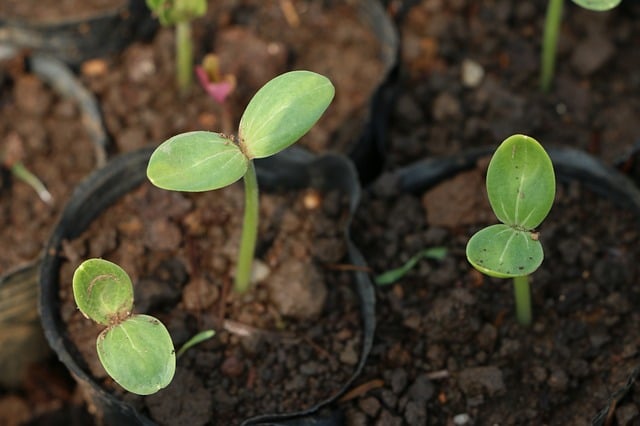What is Seed Germination
To define seed germination for kids or in layman’s terms, it is the process during which the embryo develops into a seedling.
How Seeds Turn to Plant
The embryo of a dry fully developed seed usually passes through a period of rest during which time it performs all its life processes very slowly and uses up only a little food.
Seeds may remain alive in a dry condition for long periods without germinating, but still have the power to germinate under favorable conditions.
Such seeds are said to be dormant but viable.
Some seeds can germinate immediately after being shed from the parent plant (for example most seeds of tropical plants) while others must pass through a dormant period lasting for weeks, months, or even years before they can germinate.
The process of germination actually refers to all the changes that take place during the development of a seed into a seedling.
Types of Seed Germination
During the process of germination, the cotyledons or endosperm of a seed supply food to the growing plumule and radicle.
There are basically two types of seed germination
- The Epigeal germination – This is when the plant germinates above the soil level
- The Hypogeal germination – The plant germinates below the soil level
The cotyledons during germination may be brought above the surface of the soil, in which case, the type of germination is described as epigeal.
If the cotyledons remain below the surface of the soil during germination, the type of termination is described as hypogeal.
The seed germination time, however, depends on the seed viability, and natural factors like water, temperature, oxygen, and others.
Factors responsible for Seed germination
There are tons of factors that affect seed germination, however, natural factors like air, temperature, oxygen are usually available.
Without water, the seeds can not germinate at all.
Water is a very important factor in germination.
It is usually absorbed into the seed through the micropyle, thus causing the entire seed to swell up.
Besides water, enzymes are also required for the digestion of the stored food products.
These enzymes are produced by the cells of the cotyledons.
Stages of Germination
The cells of the cotyledons become turgid and active.
They begin to make use of the water to dissolve and digest the food substances stored in them.
These are then transported to the growing plumule and radicle.
The plumule grows into the shoot while the radicle becomes a root.
The latter usually emerges from the seed through the micropyle, bursting the seed coat as it does so.
Once the seed coat has been torn, the cotyledons partially or completely separate.
Hence, the plumule can grow out of them. the shoot system then develops from the plumule and the root system from the radicle.
In seeds where the food is stored in an endosperm, the cotyledons make use of the absorbed water to digest the food from the endosperm and then pass it to the plumule and radicle.
Growth and Development of Seed into Plant
Once development and growth have begun in a seed, seedling continues its growth in three ways.
- Vertical development takes place by the lengthening of the shoot and roots.
- Lateral growth takes place by the extension of the lateral branches of the main root, and
- The axillary buds of the stem give rise to side branches or flowers.
Thus, there is a continuous change in the body form of a plant.
Germination is, therefore, the beginning of such a change from the seed to the seedling.
Plants reproduce by way of fruits and seeds, and unless these seeds are able to develop and germinate into new forms, the life of the plant can not be continuous.
The development of a seed into a young seedling is, therefore, the most important phase in the life of a plant.
It is even more important than the pollination and fertilization of flowers.








